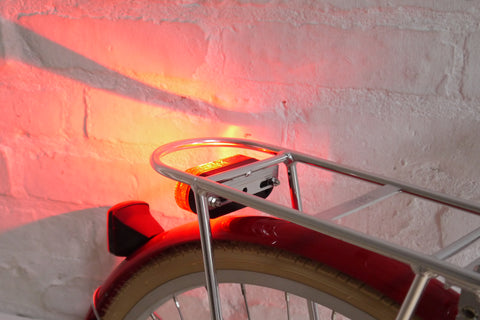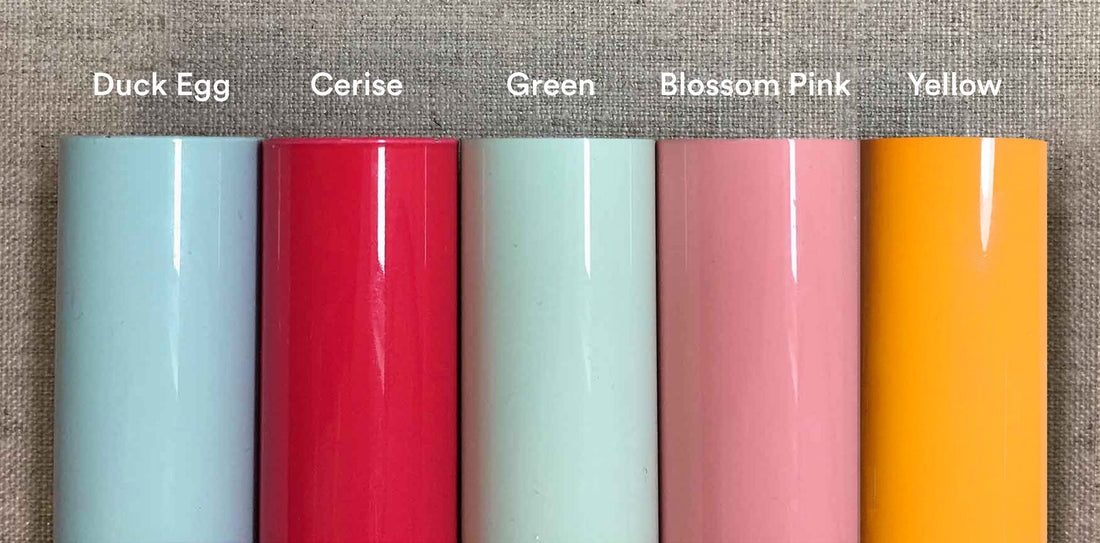Our 12 Essential Tips for Cycling at Night
In the winter months, more and more of each day is spent in the dark. It can mean it's hard to find the motivation to get out and cycle, no matter how much you love the exercise in the summer.
So, we thought now would be a good time to lay out our favourite tips and tricks to keep you safe and happy cycling at night.
The thought of cycling in the dark can be intimidating whatever the time of year (or day!), but it doesn't need to be. If you're sensible and well prepared nighttime bike rides can be some of the most peaceful and enjoyable cycles.
From keeping warm to knowing the law - here are our 12 top tips for biking at night!
1. Use Bike Lights
In the UK lighting up your bike at night is considered so essential that there are laws requiring it. This is for both your own safety and that of those surrounding you.
Bike lights are used to alert motorists, pedestrians, and other road users to your presence. This reduces the chances of an accident, as they can give you the necessary space on the road.
We thought we'd kick off our list with this as, while our guide is primarily consisting of tips, using bike lights is mandatory by law - and so the most important!
When cycling between sunset and sunrise you MUST have:
- A White Light: at the front of your cycle. Either in the centre or to the right of the frame.
- A Red Light: at the rear of your cycle. Either in the centre or to the right of the frame.
- Amber Reflectors: on both pedals, at the front and back.
- A Rear light: at the back of the bike.
For more information about the legal requirement, click here.
TIP: It's also handy to have a helmet light!

2. Wear Extra Layers
When the sun sets it's almost always met with a temperature drop.
You may think that because you're exercising you'll warm up easily. But, the last thing you want is to be shivering and wishing you were cosy at home when out on your bike.
So, we'd recommend that you always carry extra layers when you go cycling to avoid discomfort.
And we have just the layers for the job!
Our first recommendation is a base layer. It keeps you warm on cold nights and wicks away perspiration to keep you dry - making it perfect for night exercise.
The second is the humble raincoat. Ideally, one of the raincoats that tuck away into a pouch. These can easily be slipped into a pocket or your bike basket - taking up minimal room.
Trust us, you'll appreciate it when the weather unexpectantly turns! If you want even more cycle clothing recommendations be sure to click here.
3. Attach a Saddle Bag
There are some things you should always carry with you on a bike ride. And, what better way to transport them than in a saddle bag?
The mini bags attach to the bottom of your (you guessed it) saddle. They're perfect for storing your phone, a multi-tool, and those necessary snacks for fuelling up!
Breaking down is even more difficult to overcome in the dark. So, having a phone to call for help or use as a flashlight can be the difference between resolving the problem and having to wheel your bike all the way home.
It adds almost no weight to your bike, but can be an absolute lifesaver!

4. Plan your Route
It’s always important to properly plan out your route before you start a journey but this is even more important at night.
When you’re cycling in the dark everything looks different, places that were once easily spotted in the daylight can sometimes become hard to see. Planning out your route before you head off can only benefit you and make your journey just that little bit easier.

5. Tyres
Before starting a journey it's always a good idea to check your tyres just as you would with a car. Riding with tyres that could have a puncture can cause serious accidents, as well as tyres that aren’t properly inflated.
As well as this, having tyres that aren’t properly inflated can slow down your journey, you’re more likely to get punctures if you don’t already have one and the bike isn’t able to deal with the impact from the ground as well. Fixing a puncture at night is never easy!
TIP: There is a required tyre pressure for your bicycle.
6. Cycle with a friend
There’s no better way to stay safe on your bike at night than by taking a friend with you. If for some reason you did become stranded, by injury or a damaged bike, you’re able to call on your friend for help and you’re not then alone in the dark. Chances are one of you will know how to get home!

7. Brake Pads
Just as it's important to check your tyres, it's also important to make sure your brake pads are working well before you set off on a journey. Your brake pads help to create fiction on the tyres and slow you down when you brake. If these aren't working properly, you might have trouble breaking in enough time or not be able to break at all.
This tip is especially important during winter rides with icy roads and a lack of light exposure. You're able to see less in the dark and reaction times are therefore slower.

8. Wear gloves (and extra socks)
Riding your bike at night is always a cold task, especially in the winter. It’s a great idea to make sure you’re wearing gloves to prevent your hands from getting numb, as well as putting on some extra socks for your feet.
By keeping your feet and hands warm, not only are you making sure they don’t get cold, but you’re also preventing injury and circulation problems from cycling at night, keeping your body temperature up at a comfortable temperature.
9. Be reflective!
It’s inevitable you’re going to come across a road user at some point when you’re cycling at night. It’s always important to make sure you’re visible to drivers and pedestrians leaving no room for fault.
Grab yourself some lights, a bell, some reflective clothing and a gloss finish helmet to ensure you’re as visible as you can be! It’s also part of the cycling law, at night, you have to make sure you’re visible to those around you.
TIP: To help with light exposure for your bike, don't forget the rear bike lights to create a bright light on your bike, or your rear light for your helmet.

10. Waterproof shoes (overshoes) - protect your feet
The weather is always changing and is so unpredictable so making sure you’re properly prepared is a key step.
Try wearing some waterproof shoes - known as overshoes - to help protect your feet from becoming slippery and becoming numb in the cold and the rain. Having numb or painful feet make your reactions to any problems slower, it’s in your best interests to keep warm!
11. Be sensible & Safe - slow down, know when to not go
Knowing the rules of the road as well as knowing how to cycle is important. There’s no harm in having knowledge of the rules of the road even if you’re not driving a car since you’re likely to be on the road with drivers.
Know when to slow down, when you should and shouldn’t go, how to signal and the blind spots for large trucks and cars. All of these things will help you stay safe.

12. Get out there!
If you’re nervous about cycling at night, the only way to overcome this is to get out there and do it! Once you’re on your bike and cycling, we’re sure you’re going to love it, especially now you’re properly prepared for your journey!
Don't forget before you go, make sure you get enough hours of sleep before any journey like this, it's important you're awake when it comes to keeping safe, especially with a lack of natural light to wake the body up.
You should also allow your body to calm down before taking on too many journeys. Make sure you don't ride more than one long journey in the space of a 24-hour cycle and allow cool down and burn times before taking on more.
All that’s left to do now is grab your bike, grab some last-minute essentials - don’t forget those plasters - and get going!













